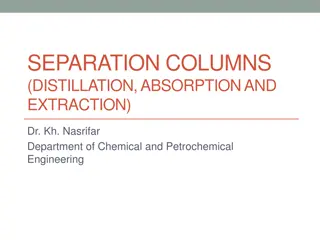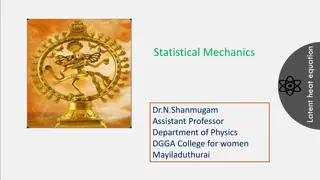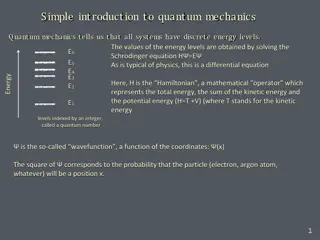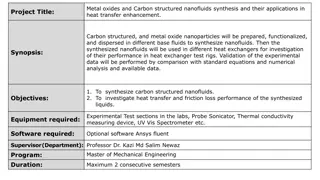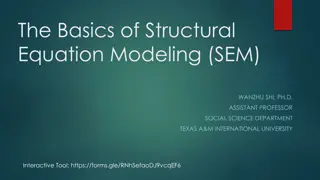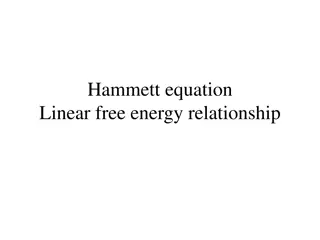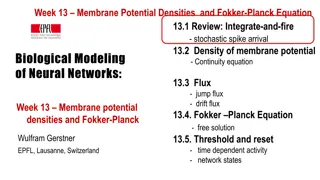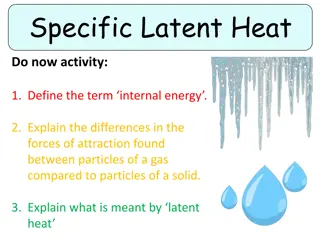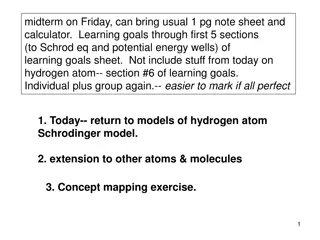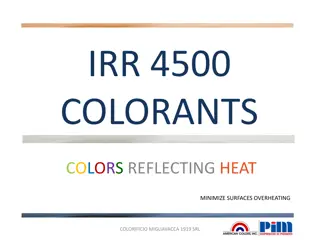Analytical Solutions for 2D Heat Equation with Separation of Variables
Consider the steady-state 2D heat equation with constant thermal conductivity. Analyze analytical solutions using separation of variables method for a square plate with defined boundary conditions. Learn how to express the general form of solutions and apply them to the heat equation in Cartesian geometries.
Uploaded on Sep 29, 2024 | 0 Views
Download Presentation

Please find below an Image/Link to download the presentation.
The content on the website is provided AS IS for your information and personal use only. It may not be sold, licensed, or shared on other websites without obtaining consent from the author. Download presentation by click this link. If you encounter any issues during the download, it is possible that the publisher has removed the file from their server.
E N D
Presentation Transcript
ME 345 Heat Transfer (HTx) Professor: Dr. Dan Cordon (AKA Dr. Dan)
2D SS HEAT EQUATION Consider the steady-state 2D Heat Equation with constant thermal conductivity and no volumetric heat generation. Once the SS solution of T(x, y) was found you could still use Fourier s Law to determine qx and qy
2D SS HEAT EQUATION There are multiple ways to approach solving this equation. Analytical solutions Graphical solutions Numerical solutions Finite difference Finite element Boundary element
ANALYTICAL SOLUTIONS Can do this with Separation of Variables Consider this 2D square plate with T1 on three surfaces @y = 0 @x = 0 @x = L T2 on top surface2 @y = W To simplify the solution we can define a new variable such that:
ANALYTICAL SOLUTIONS Like dimensionless temperature This means that on surfaces x = 0, x = L, and y = 0 that = 0 At surface y = L we have = 1 Everywhere in between we will have values of that are between 0-1 So the Heat Equation turns into: Boundary Conditions
ANALYTICAL SOLUTIONS We then assume the form of the solution could be expressed as the product of two functions (superposition) One function depends only on x One function depends only on y So our assumed solution should look like: Substituting that into our Heat Equation we get:
ANALYTICAL SOLUTIONS This is already separated, and since one side is equal to the other side we can define a separation constant, 2. What was formerly one partial differential equation is now two ordinary differential equations:
ANALYTICAL SOLUTIONS It turns out that the general form of solutions to X and Y look like: And when you substitute that back into the Heat Equation you get: (This is true for cartesian geometries of any boundary condition)
ANALYTICAL SOLUTIONS Applying boundary conditions for *this* problem When (0,y) = 0 we find that When (x,0) = 0 we get: which is only satisfied when When (L,y) = 0 we get: And here is where things get interesting. The last equation requires that must be discrete values for which
ANALYTICAL SOLUTIONS This means the solution to the Heat Equation is: Combine the constants (which are going to be a function of n), and use a really tricky trig substitution (thank you mathematicians!) We get the solution to the Heat Equation for *this* problem is:
ANALYTICAL SOLUTIONS But now we have a new problem. There is literally an infinite number of solutions to this form of the solution. But, we can use superposition to get: We are *almost* done, except we still need to come up with Cn. We get this from applying the last boundary condition.
ANALYTICAL SOLUTIONS Okay, I totally lied. We are *not* almost done. Because finding Cn is a difficult problem all its own. The textbook has a great step-by-step derivation which uses orthogonality and creating an infinite Fourier series (yes, the same person that gets credit for Fourier s Law) that would solve for Cn. . B.O.C
ANALYTICAL SOLUTIONS Put it all together and we finally have: Isotherms are shown as the parabolic lines Heat flow lines are the ones with arrows on the end
GRAPHICAL SOLUTIONS You already know several things about the solution to this problem without doing any math. You know the temperature on each surface You know the slope of the heat flux at each surface You know that heat flux is always perpendicular to the isotherms You could nearly sketch the temperature profile of this solution without doing any calculus. Once you had the temperature profile you could easily sketch the heat flow lines. This is the root of graphical solutions
NUMERICAL SOLUTIONS As computing power continues to improve it s more and more common to do numeric simulations for any HTx problems 2D or more (especially when transient). Numeric solutions (when they do solve) make really pretty pictures. The trouble is knowing when these pictures are correct and when they are not. Need to fall back on a graphical solution to check if numeric solution is reasonable.














